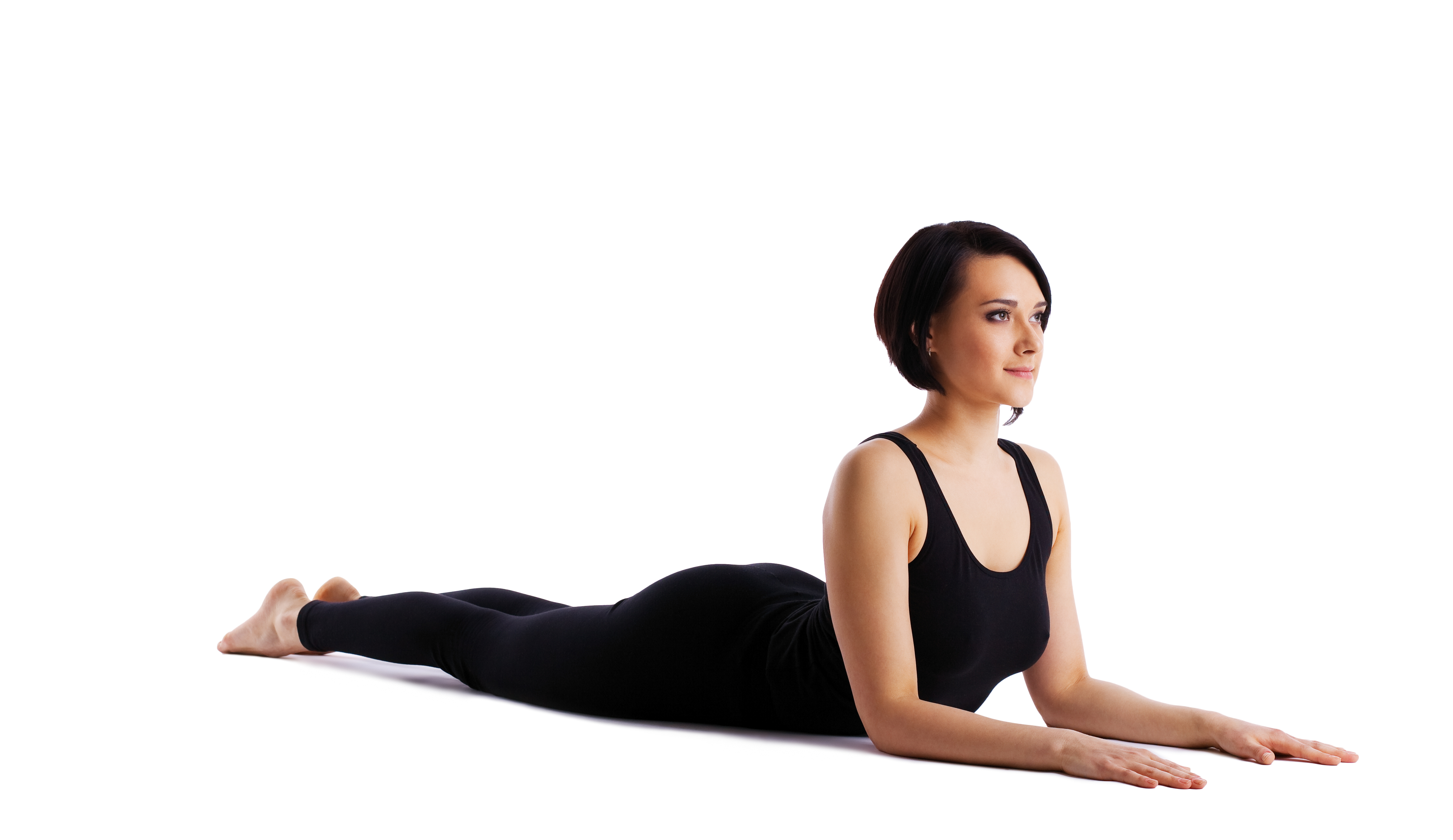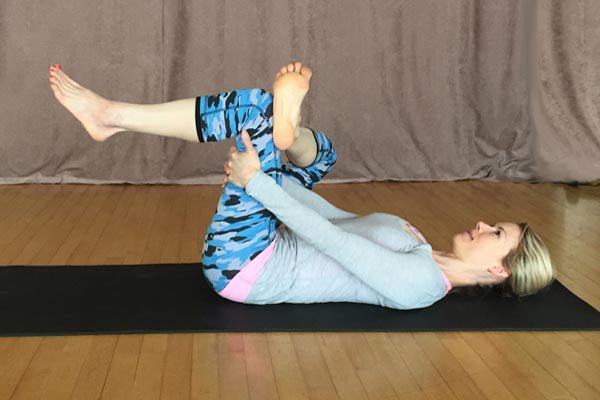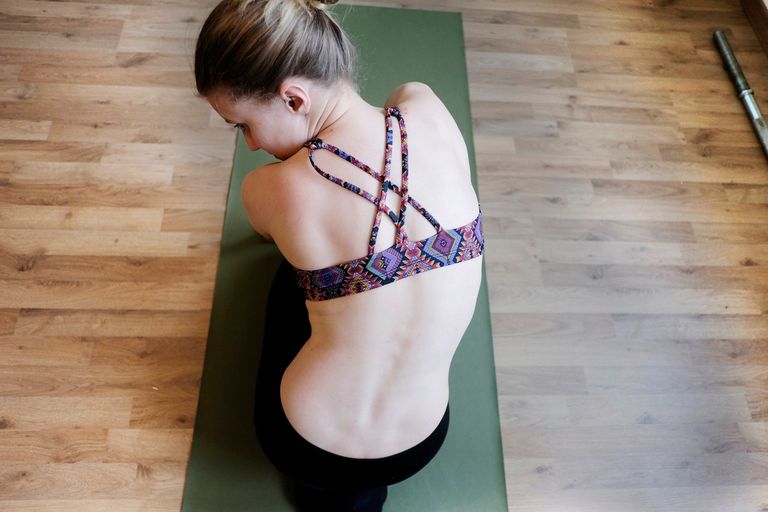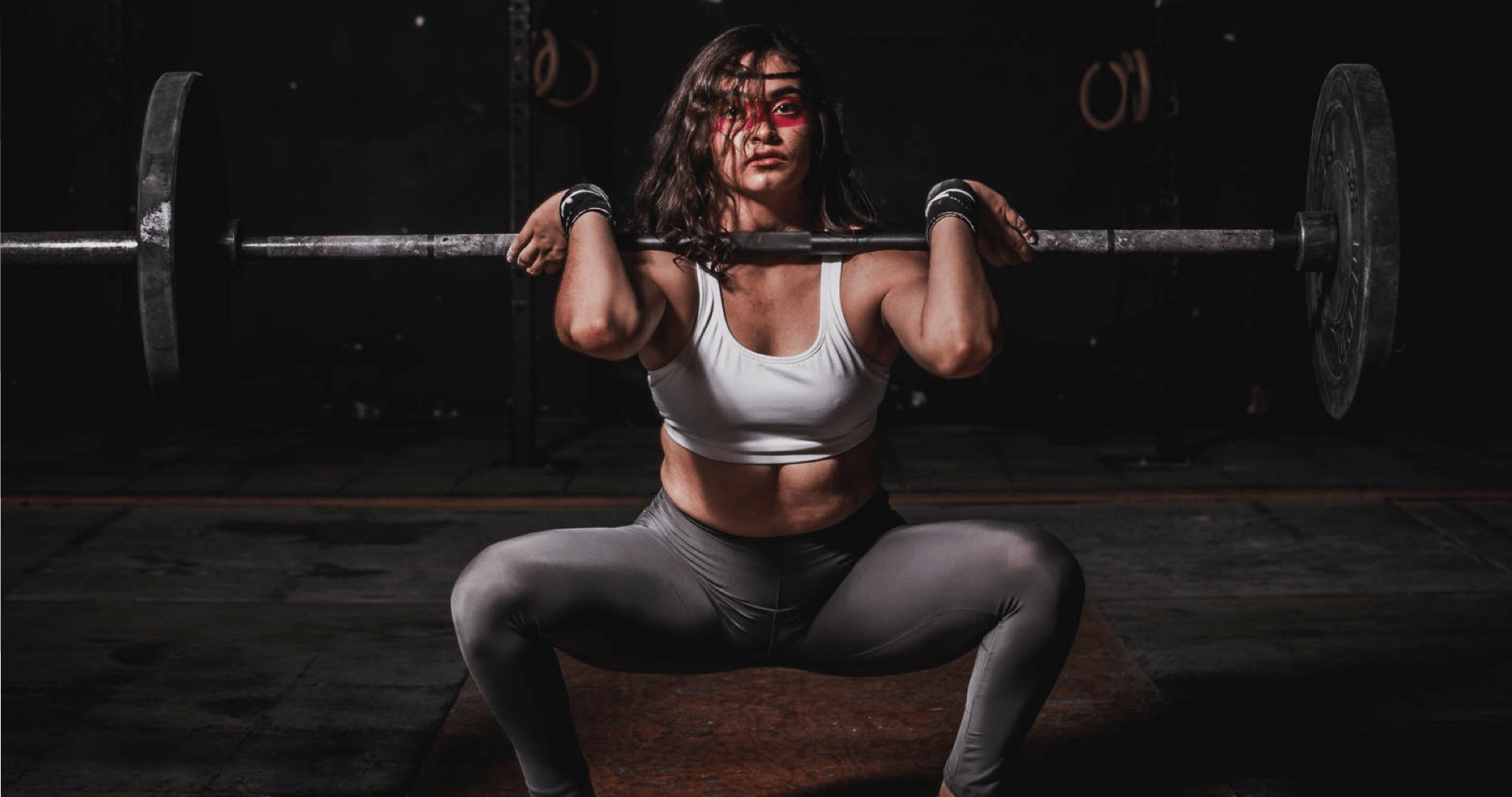The lower back, or the lumbar region, can be an area that often gets sensitive for most of us at some point in our lives. Whether we have to sit a lot during the day, or whether we move a lot, the lumbar region can get affected. In any case, pain in the lower back can seriously affect your mood and your day.
To get you started, here are five yoga poses to ease lower back pain and help relieve that dull ache.
1. Supine Twist

A twist to the spine offers a great tension reliever for the entire back, as well as the neck. You get to lay down, relax and let the gravity help you.
Lay on your back, bring your arms to a T-shape on the floor, and bring your knees towards your chest. Slowly lower both knees to the left, keeping the neck neutral or turning the gaze away from the knees.
Try to keep both shoulders on the floor, and if the top knee lifts too much, you can place a block or a bolster between the knees. Stay anywhere between 1-4 minutes, and repeat on the other side.
2. Sphinx Pose
 The Sphinx is a great pose for toning the spine and stimulating the sacral-lumbar arch. When we sit a lot, the lower back tends to flatten, which can cause pain. Sphinx pose promotes the natural curvature of the lower back.
The Sphinx is a great pose for toning the spine and stimulating the sacral-lumbar arch. When we sit a lot, the lower back tends to flatten, which can cause pain. Sphinx pose promotes the natural curvature of the lower back.
Start by laying on your stomach, feet hip-width apart, and bring the elbows under the shoulders. If there is too much pressure on your lower back, you can bring your elbows slightly forward.
If you want a deeper bend, place a block under the elbows. Hold the pose for 1-3 minutes, and come out by first lowering your upper body on to the floor. Relax on the floor as long as needed, and then come to a child pose for few breaths.
3. Thread the Needle Pose

If the hips are tight, the movement we need tends to come from the back, which results in back pain. When the hips and hamstrings are open, this can help alleviate the lower back pain as well, since the body has a better and fuller range of motion. This pose stretches the hips, outer thighs, lower back and spine. It's also a milder, modified version of the Pigeon pose.
To start, lay on the floor, and bring the soles of the feet on the ground, feet hip-distance apart. Place your right ankle on the left thigh, and keep the foot flexed throughout the pose. Take your right arm in between the space of the legs, and the left arm outside the left thigh.
Interlace the fingers either behind your knee, or on top of the shin, depending on the space available to you. Keep the back and shoulders relaxed. Stay anywhere between 1-3 minutes and change sides.
4. Cat and Cow Pose

With this simple movement you are stretching the hips and the entire spine.
Start on your hands and knees. While inhaling, lift your chest and tailbone towards the ceiling, and while exhaling, arch your back, pressing through the shoulder blades and dropping your head.
Continue according to the rhythm of your breath. Feel the muscles on your back, and take any additional movement that might feel good for you today.
Make 6-8 slow rounds.
5. Downward Facing Dog

Downward Facing Dog is a great pose for lengthening and decompressing the entire spine. It stretches the hamstrings as well, which will also help with lower back issues.
From your hands and knees, tuck your toes under and rise to Downward Facing Dog. Start with your knees bent, back straight and long, tailbone towards the ceiling. Slowly straighten and stretch one leg at a time back bringing the heel closer towards the ground.
Draw the shoulder blades towards the spine and actively try to lower them, rotating your upper arms outwards. Stay for 5 breaths.
Your lower back supports the whole torso, so taking care of it is kind of important. Sitting less, moving more, stretching and strengthening the back goes a long way. However, if you are having persistent pain in your lower back, it's always good to check it with the doctor to make sure nothing more serious is going on.
This article is from https://www.doyou.com/


